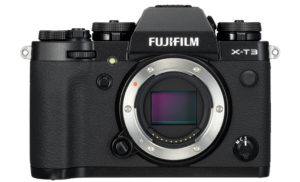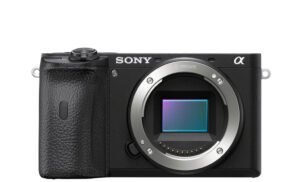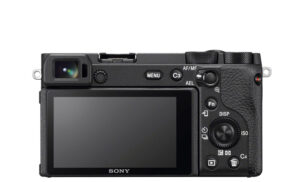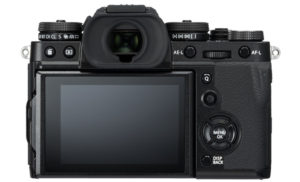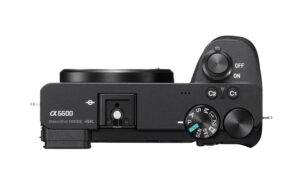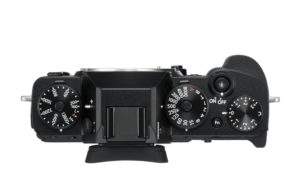The Sony A6600 is the latest addition to the E-mount APS-C range, and also the most advanced APS-C camera to date from the brand. There are some interesting changes to the design and usability, but if we compare it to one of the most popular high-end mirrorless cameras, the Fujifilm X-T3, we can immediately see that it is up against some stiff competition! Let’s take a look at how they compare.
Additional coverage:
A6100 vs A6400 vs A6600 – A6500 vs A6600 –
A6600 vs A7 III – A6600 vs X-T3
Ethics statement: The information supplied in this article is based on official specifications and our review of the X-T3. We were not asked to write anything about these cameras, nor were we provided with any kind of compensation. Within the article, there are affiliate links. If you decided to buy something after clicking the link, we will receive a small commission. To know more about our ethics, you can visit our full disclosure page. Thank you!
1. Design
There are a number of visible differences between these two cameras. The first is the extra height of the X-T3 due to its dials and the viewfinder which is centrally placed. On the A6600, the EVF is inside the body on the left side (looking from the rear).
The X-T3 is sligthly heavier and larger than the Sony camera as you can see from the measurements below:
- A6600: 120.0mm x 66.9mm x 69.3mm, 503g
- X-T3: 132.5mm x 92.8mm x 58.8mm, 539g
The second distinctive characteristic that sets these two cameras apart is the dial layout. The X-T3, like most other models in the X-series, has traditional dials for shutter speed and ISO that are reminiscent of the mechanical controls of film cameras. There are more controls overall, including twin dials on the front and rear, metering and drive sub-dials, an AF Joystick on the rear and an exposure compensation dial on top.
The A6600 has fewer controls, and I especially miss the twin dials as you are forced to use the rear command wheel to control the shutter speed or aperture. There are more custom buttons however (11 vs 9 on the Fuji).
The Sony has a more prominent grip on the front, which is a design upgrade to accommodate the larger battery (more on this further down).
Both cameras are weather sealed but the X-T3 also offers freeze proofing down to -10˚C.
Neither has a built-in flash but the X-T3 comes with the small EF-X8 unit.
The X-T3 has two SD card slots with UHS-II compatibility. The a6600 features just one slot and only supports UHS-I.
Finally, the X-T3 has a faster USB Type C connection whereas the A6600 uses an older micro USB 2.0. The Fuji also has a flash sync socket.
2. Viewfinder and monitor
The A6600 has an electronic viewfinder with 2.36M dot resolution, 0.7x magnification and a refresh rate that can go as fast as 100Hz in PAL, or 120Hz in NTSC mode.
The X-T3 offers a better EVF: it is larger (0.5 vs 0.39 inches), has more resolution thanks to the 3.6M dot panel and the magnification is also greater at 0.75x. The refresh rate goes up to 100fps when the boost mode is activated.
On the rear, the Sony has an LCD screen that can be tilted up 180˚ to facilitate selfies or vlogs.
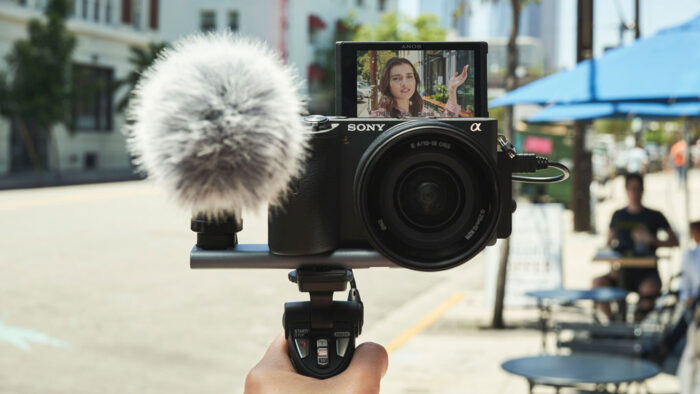
The X-T3 has a three-axes mechanism that allows you to open the monitor to the side by approximately 60˚ (useful if you take pictures in vertical orientation) in addition to the traditional up and down movements. There is no 180˚ option however.
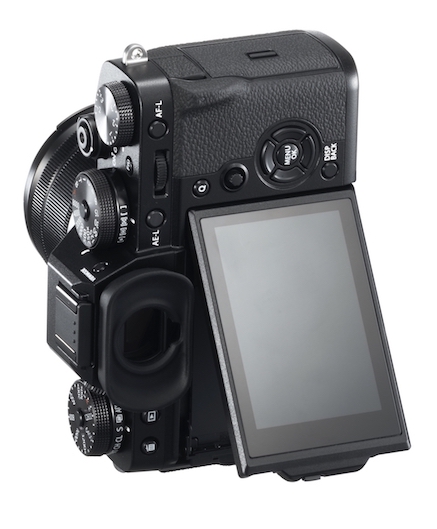
Both screens are touch sensitive. On the Sony, it merely works with the focus area (you can change its position or activate touch tracking). On the X-T3 you can also take a shot, change settings in the Q menu, or flick from one of the four sides to activate a function.
3. Image stabilisation
The A6600 features 5-axis stabilisation just like its predecessor the A6500. It works for stills and video and has a rating of 5 stops (CIPA standard).
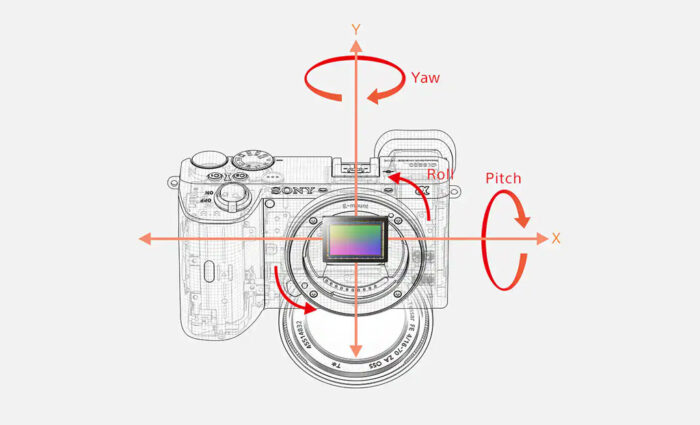
It works with all E-mount lenses, as well as adapted lenses that can transmit exif data (lenses and adapters with electronic contacts). If there is no electronic transmission, you can still use 3 axes by inserting the focal length used manually. If you mount a lens with optical stabilisation, the latter is combined with 3 axes on the sensor.
Our experience with the A6500 was so-so. Certainly having IBIS is useful if you work with a lens that doesn’t have an OSS system, but otherwise we didn’t find that it brought a substantial advantage over a lens with optical stabilisation, especially in video mode. I’m curious to see if the A6600 improves the performance.
The X-T3 doesn’t have in-body stabilisation, so your only option is to use lenses with OIS, or a third party support like a gimbal.
4. Sensor
The A6600 and the X-T3 sport an APS-C sensor. The Fuji has slightly more resolution with 26.1MP, whereas the Sony has 24.2MP. The X-T3 sensor has a BSI design whereas the A6600 chip has a thin wiring layer and large photodiode substrate to help collect light more efficiently.
The Fuji sensor design also differs when it comes to pixel distribution: whereas the Sony uses the standard Bayer array, the X-T3 has the proprietary X-Trans design where each line includes at least one red, blue and green pixel.
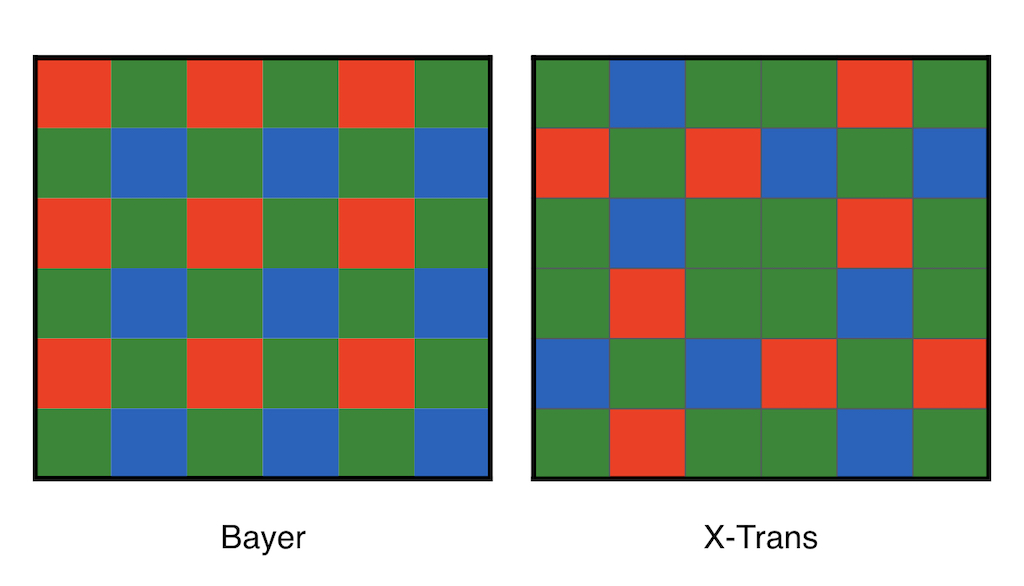
The a6600 has a normal ISO range that goes from 100 to 32000 ISO, with extended levels going up to 102400 ISO. The X-T3 starts from ISO 160 and goes up to 12800 ISO, with extended values down to ISO 80 and up to ISO 51200.
Curious to see more about how the two cameras compare when it comes to image quality? Check out our A6400 vs X-T30 comparison. The two cameras use the same sensors found inside the A6600 and X-T30!
5. Autofocus
The A6600 features the latest technology Sony has to offer. In addition to 425 phase and contrast detection points that cover 84% of the sensor, it uses AI and machine learning technology to track a subject more precisely, analysing things such as face, eye, colours, brightness and depth. It has the world’s fastest acquisition time of 0.02s.
The X-T3 uses 117 points that can be subdivided into 425 with certain settings. These points cover more than 90% of the sensor’s area.
We haven’t yet tested the A6600, but we reviewed the A6400 whose AF system is the same. The tracking capabilities are impressive for stills and video, and are definitely a step above the performance of the X-T3.
The Fuji isn’t bad however, and with settings such as Zone Area, it can deliver very good results even with difficult subjects such as birds in flight.
Another area where I feel the Sony is better is face and eye detection. Fujifilm has made lots of good improvements, and the X-T3 is definitely more reliable than ever before, but I still find Eye AF on the Sony to be a bit quicker and more precise. Plus it works with animals too!

One thing I prefer on the X-T3 however is the AF-C Custom Settings, which provide 5 presets and a sixth customisable option to control the AF responsiveness and speed. They are very precise controls, and unfortunately aren’t present on Sony’s APS-C cameras.

6. Burst shooting and live view
Both cameras can shoot at 11fps with the mechanical shutter. The X-T3 has a faster shutter speed of 1/8000s versus 1/4000s on the A6600.
Activate the electronic shutter and the Fuji outperforms the Sony by a long shot. You can shoot up to 20fps, or 30fps with a 1.25x crop. Furthermore, these speeds work with live view and no blackouts, just like the Sony A9. It’s a very useful mode when tracking fast and difficult subjects as there is no lag of any kind in the EVF or on the LCD screen.
I always thought that Sony would introduce this technology on an APS-C camera at some point, but I guess we have to keep waiting. The A6600 shows you the last image taken at 11fps, or live view with blackouts up to 8fps.
The X-T3 takes advantage of the electronic shutter for another function called pre-shot, where it starts to save frames when you half press the shutter. You can also increase the shutter speed to a maximum of 1/32000.
7. Video capabilities
Video is another area where you would expect to see more on the recent A6600, yet here again it is the X-T3 that steals the spotlight.
The Sony records in 4K up to 30fps with full pixel readout (full width up to 25p, 1.2x crop at 30p). It uses the XAVC S codec which works at 100Mbps. In 1080p, you can go as fast 120fps to make smooth slow motion videos. These specs are the same as those found on many Sony cameras. Now don’t get me wrong, the quality is very good but the codec starts to feel a bit dated now and it lacks some of the more advanced specifications of the Fuji.
So how does the X-T3 compare? Well for a start, it can record 4K up to 50 and 60p (with a 1.18x crop). Up to 30p, there is no change in field of view. Furthermore, it can record internally at 10-bit 4:2:2 using the HEVC codec. The bitrate goes up to 400Mbps (200Mbps at 50/60p) with the ALL-I compression, and a DCI format is also available for 4K and 1080p.
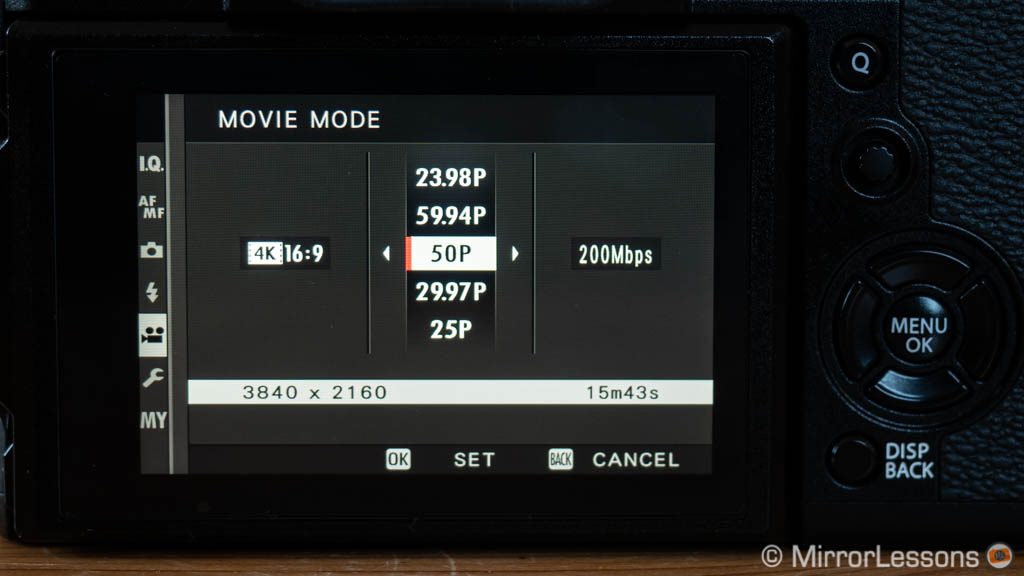
The A6400 has a rich selection of settings specifically designed for movie recording. Called Picture Profiles, they include gamma curves such as S-Log2 and S-Log3, as well as HDR profiles. The X-T3 has an F-Log curve, HLG, the Eternal profile and some effective settings to control dynamic range.
In 1080p, the Fuji can also record up to 120fps but there is a more severe 1.29x crop applied.
One clear advantage of the A6600 is that it doesn’t have a recording time limitation, so you can go past 30 minutes without the camera stopping the recording. The X-T3 does 30 minutes in 4K up to 30p, or 20 minutes at 50 or 60fps.
Finally, if you want to take advantage of an external recorder, the X-T3 can output 10-bit 4:2:2 whereas the A6600 remains at 8-bit.
Just as for stills, the video capabilities of these two cameras are more or less identical to the A6400 and X-T30. You can watch the video below to get a better idea of how their video performance compares.
Note: the A6600 also has an headphone output in addition to the mic input, just like the X-T3.
8. Battery life
The A6600 inherits the same battery type used for the latest A7 full frame cameras. The NP-FZ100 pack gives a significant boost to the battery life of this camera, making it the most highly rated among APS-C models.
With a single charge, it can take anywhere between 720 and 810 shots depending on whether you use the EVF or LCD screen (CIPA ratings based on Sony’s official specifications). In my experience, this battery can easily manage 1500 shots and probably even more on this camera.
The X-T3 uses the same battery found on other X-mount models. It’s not bad but will decrease more rapidly, especially when shooting video or bursts with the electronic shutter. The official rating is 390 frames.
The Fujifilm has an official battery grip, the VG-XT3. We will need to wait for third party manufactures such as Meike to produce one for the a6600, but be aware that they have some limitations. (Check out our accessory list to find out more.)
Finally, both cameras can be charged via USB.
9. Lenses
When comparing products from different brands, it is important to mention the lens selection as it is a vital part of the gear you’ll end up using.
The Sony lens selection can appear very complete depending on how you look at it. If we take into account the entire E-mount system, which includes both APS-C and full frame lenses, then you’re spoiled for choice thanks to the many products designed by Sony, Sigma, Samyang, Zeiss and Tamron, not to mention the multiple manual focus options. However, several of these lenses are either expensive or large/heavy, and may not suit the compact dimensions of the A6600 very well.

If we look at the APS-C selection on its own, the catalogue doesn’t appear as balanced or complete as the Fuji one. You have fast primes and the recently announced 16-55mm f2.8, but most of the other lenses are slow with a non-constant aperture, especially the telephoto and super telephoto options.
Fujifilm offers a more balanced selection in my opinion, with fast zooms, fast and high quality primes, and more affordable options. It doesn’t have as much support from third party brands as Sony does however, unless we also consider manual focus lenses.
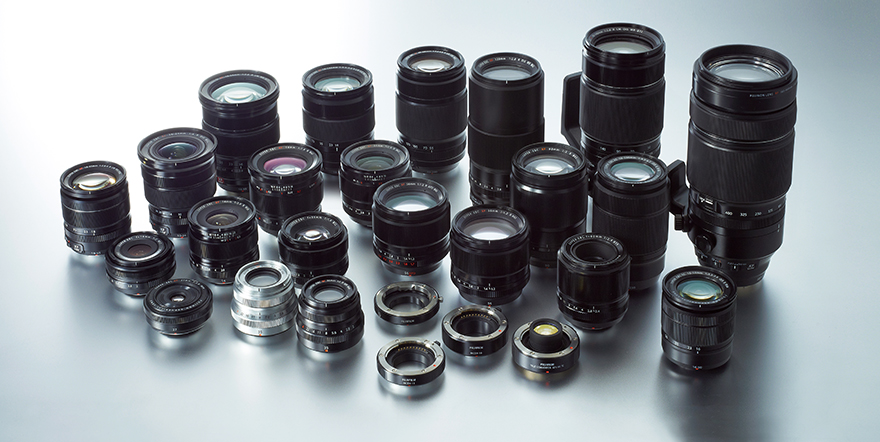
10. Price
The A6600 is a more recent model and can be found for $1400, £1450 or €1600 (body only).
The price of the X-T3 may be more or less expensive depending on the region. It is sold for around $1500 / £1350 / €1350.
Remember that prices can vary due to special offers, cashbacks and so on.
Conclusion
There are welcome improvements to the A6600 from a practical point of view. I appreciate the larger grip and the bigger battery, and the 180˚ tilting screen is probably more useful than the 3-way mechanism found on the X-T3. The autofocus system is also stellar so there is no question with the a6600, you get a good all-rounder.
Performance wise though, there are a few things that the X-T3 does better, and those things are technological improvements that you would usually find on a Sony first. Features like 4K up to 60p, 10-bit internal recording, and 20fps with live view and no blackouts make the Fuji camera a stunning performer.
When I first started writing this article, I though it would be easier to pick a favourite, but I do admit I’m struggling more than expected. Which one would you choose and why?
Reminder: the links below are affiliate links. If you decided to buy something after clicking the link, we will receive a small commission.
Check price of the Sony a6600 on
B&H Photo
Check the price of the Fujifilm X-T3 on
Amazon | Amazon UK | B&H Photo | eBay

